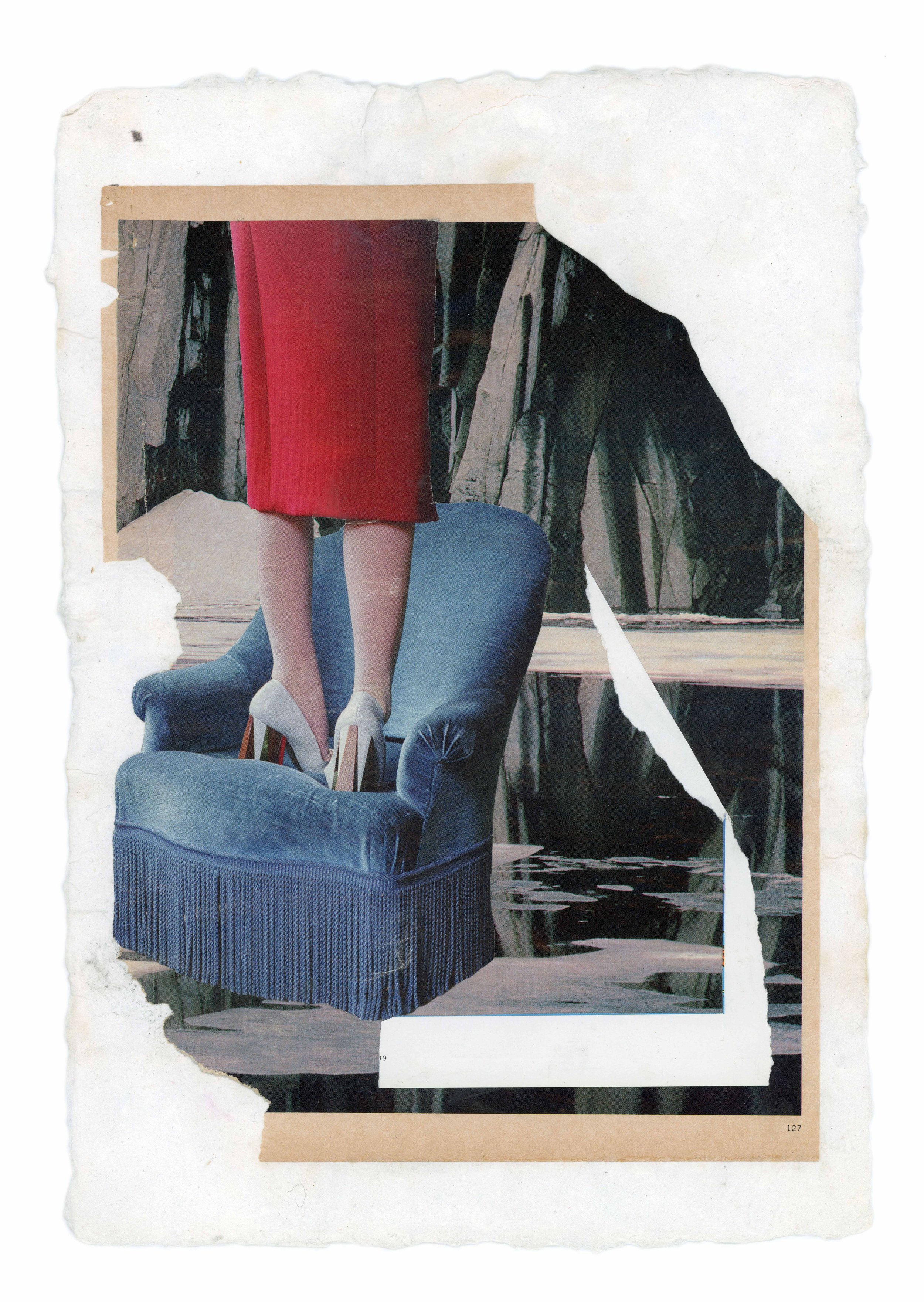Elise Guillen is a multidisciplinary artist from Massachusetts. She received her BFA in Illustration in 2016. Two years later, her love for analog storytelling led to a solo cross country move to Portland, Oregon. Here, Elise began working on stop-motion animated productions for clients such as Netflix and Nickelodeon, while also delving deeper into her personal mixed media collage practice.
The collage process of assembling and re-contextualizing disparate elements into new meaning is a synthesis that mirrors her day job in stop-motion, meticulously piecing together a larger narrative frame by frame. Elise’s collage work examines tension between structure and spontaneity, a curiosity for the human figure, intuition, and sustainability. Her work has been recognized by Society of Illustrators, American Illustration, and Creative Quarterly.
Today, I’m approaching my collage practice with a depth I have not previously encountered in my work. In response to the ongoing global climate crisis, I am increasingly mindful of my environmental impact and the sustainability of my creative process. Over the past decade, I have accumulated a collection of paper scraps, magazines, and ephemera, minimizing the need to purchase new collage materials. However, as I occasionally find myself running out of base materials like mixed media paper or bristol board, I’ve been experimenting with the process of handmade paper production as a more sustainable alternative.
This study took a more personal form earlier this year when I found myself with an excess of clothing too worn to donate. Thinking about waste reduction and the spirit of reimagining within collage, I cut up one of my tattered tank tops and threw it in a blender. I created a fibrous pulp which I then transformed into handmade paper that I collaged onto. I continued this process with jeans, socks, underwear – all of which are on view (containing deckled edges) within my portfolio. Minimizing waste while incorporating this craft into my process has ignited an innovative flame within me. The origin of the paper fibers adds an additional layer of narrative to the work, making each piece truly analog and further connecting my practice to a broader environmental consciousness.
Meditating on the origin of the clothing fibers themselves, I trace their roots back to the land. During my time at Hektor, I plan to explore the process of making handmade paper from a variety of plant fibers sourced from the grounds at the farm and the wider Lanzarote landscape. I aim to challenge my own conceptions of what’s possible, transforming dry grasses and leaves into the tangible pages of a story, quite literally regenerating the land into art.
The body of work I create at Hektor will serve as the foundation for an explorative series of what 100% fully sustainable collage can look like. This residency will allow me to reassess the ecological mission behind the collage practice I have developed over the past decade. I will also have the chance to build invaluable relationships with other like-minded artists whose work engages with environmental themes, further enriching my network and creative perspective. In line with Hektor’s values, my aim is to contribute to the ongoing dialogue about sustainability and the connection between art and the environment that Hektor has fostered for years. This time spent on Lazarote will not only broaden and diversify my skill set and portfolio, but it will also enable me to continue exploring this exciting new direction in my work.









